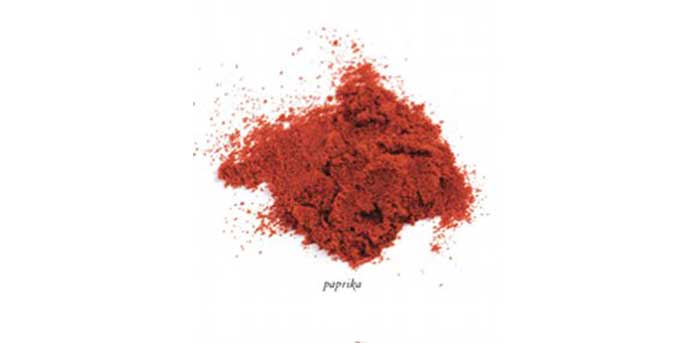Add a little spice to your life
“And I had but one penny in the world, thou shouldst have it to buy gingerbread.”
– William Shakespeare, Love’s Labour Lost
Food is love. Food is comfort. But food can also be exciting and bold. Not merely sustenance but flavor that transports us to another culture or time. We have spices at our fingertips that our grandmothers would have marveled at. They’re so inexpensive that kings—who gave their treasures to finance exploration for spices—would gasp.
Yet we continue to eat bland food. A little salt, a dash of pepper, but cardamon? Coriander? What if it’s too hot or too spicy?
Ban the bland
Patty Erd, who owns The Spice House in Evanston, Chicago and Milwaukee, has heard it all.
“Some cooks are nervous that spice equals hot. I advise people to start with just a little. Maybe one of our blends,” she says, referring to the hundred or so different spice blends, like Old World Central Street Seasoning, that combines paprika with 31 other spices and herbs for a versatile seasoning. Erd recommends it for chicken, potatoes, hamburgers—almost anything savory—because the mixture flavors food without overwhelming a dish. It’s a starting point for the hesitant.
Chef Warren Jones, who runs the kitchen at Bluegrass in Highland Park, teaches classes about Cajun cuisine and the role of spice. And patrons also ask about the spice levels in his food, afraid that Cajun means spicy.
“The role of spice isn’t to burn,” he says. “You want a nice mouth feel, layers of flavor and not one overbearing taste.”
He counsels the new and nervous to start with the amount of spice that you’re comfortable with, then add just a little bit more.
Old and dusty
If your food is still blah, the problem might be your spices. Experts give dried herbs and ground spices a shelf life of about a year.
Their flavor comes from their essential oils and those are released when the spice is ground or the herb is cut. The longer a spice sits after grinding, the more the flavor fades. So if you’re looking at your spice drawer and can’t remember how many Thanksgivings you’ve used that jar of “poultry seasoning,” it’s probably time to toss it.
Layer and blend
Some spices have instantly identifiable flavors, like cinnamon or mustard seed. Others play a supporting role, but if you leave one spice out, the dish’s flavors never come together properly.
“I like to start with white pepper, then add black pepper and then just a touch of cayenne,” says Jones. “You put those three together, and you’ve got a party going on.”
You can also layer with fresh herbs. A sturdy herb, like rosemary or thyme, can go in at the beginning of a stew, infusing it with flavor. Parsley and basil are better sprinkled on right at the end to add a little color and also a brighter flavor.
Bottles and blends
North Shore home cooks, have one of the country’s top spice purveyors right here: The Spice House in Evanston. Patty and Tom Erd learned from her parents, the legendary Penskey family, who have been in the spice business 52 years. Ask any spice-related question, and they probably know the answer. Also, their culinary-trained staff will happily give you their opinion and advice if you’re trying something new.
But what really makes the store stand out is the freshness of their product and their willingness to sell small quantities at prices far below that of grocery stores.
“We were at a restaurant one night and had this beautiful curry bisque soup,” says Erd. “My husband looked at me, and we both thought the same thing: Is this our curry?”
The couple checked the next day and found that the four-star chef had indeed ordered 10 pounds of their Maharajah Curry.
While you might not go through 10 pounds of curry in a lifetime, you might go through one ounce in a few months. And if not curry, maybe try a new chili powder and see if it livens up your favorite chili recipe. Or smoked paprika.
There are hundreds of wonderful herbs and spices out there, all just waiting to give your cooking a little flavor.
What’s an herb? Why isn’t it a spice?
Both herbs and spices flavor our food. The main difference is origin. Herbs are plants you can grow here: rosemary, thyme, basil, cilantro, etc. We usually use the leaves fresh or dried, but also some flowers like lavender and roots like horseradish.
A spice isn’t going to grow in Illinois. It’s the seed, fruit, leaf, rhizome or bark of a tropical plant from somewhere exotic like Madagascar or Sri Lanka.
But even though spices have distant origins, the flavors have been part of European culinary tradition for centuries. So while you might think it daring to put a little cardamon in your meat loaf, your great-great grandmother wouldn’t have blinked an eye, but might have added just a dash more.
Local Resources:
The Spice House
1941 Central Street Evanston
Every spice and blend you can imagine and sold in quantities from 1 ounce to pounds.
Urban Accents
A Chicago-based company that features spice blends, seasoned sea salts and grill rubs.
HYPERLINK “https://www.urbanaccents.com” https://www.urbanaccents.com
Book:
 The Spice Lover’s Guide to Herbs and Spices
The Spice Lover’s Guide to Herbs and Spices by Tony Hill
History, how-to use spices and recipes

